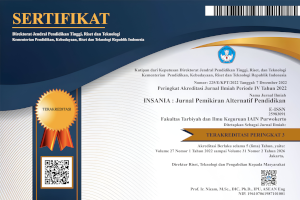Difabilitas dan Pendidikan Inklusif: Kemungkinannya di STAIN Purwokerto
DOI:
https://doi.org/10.24090/insania.v13i3.312Keywords:
Discrimination, ableism, diffability, inclusive education.Abstract
Anti-discriminatory practicioners in many campuses have, so far, focused themselves too much on gender. In fact, there are more than one source of discrimination and oppression. One of them is ableism. Ableism is an ism that categorizes people by seeing their organs of body. For it, people can be divided into two groups. Those are the able and the disable. The able is a group of people who are “normal†in term of their organs of body. Conversely, the disable is a group of people who are “abnormalâ€in term of those. The categorization leads to discriminatory acts and views of “normal†people to the disable. One of Requirements of enrolling to schools or jobs is that the candidate should be physically and spiritually healthy. This condition makes many “disable†people eliminated from the competition. In order to combat the discrimination, one of the ideas is exchanging the term disable/disability with diffable/diffability. Another idea is inclusive education. That is an education system which put the diffable and the non-diffable in one class. This system is very effective for combatting discrimination and campaigning democracy and equality in life.Downloads
References
Downloads
How to Cite
Issue
Section
License
Authors who publish with this journal agree to the following terms:
Authors retain copyright and grant the journal right of first publication with the work simultaneously licensed under a Creative CommonsAttribution-ShareAlike License that allows others to share the work with an acknowledgment of the work's authorship and initial publication in this journal.
Authors are able to enter into separate, additional contractual arrangements for the non-exclusive distribution of the journal's published version of the work (e.g., post it to an institutional repository or publish it in a book), with an acknowledgment of its initial publication in this journal.
Authors are permitted and encouraged to post their work online (e.g., in institutional repositories or on their website) prior to and during the submission process, as it can lead to productive exchanges, as well as earlier and greater citation of published work (See The Effect of Open Access).








